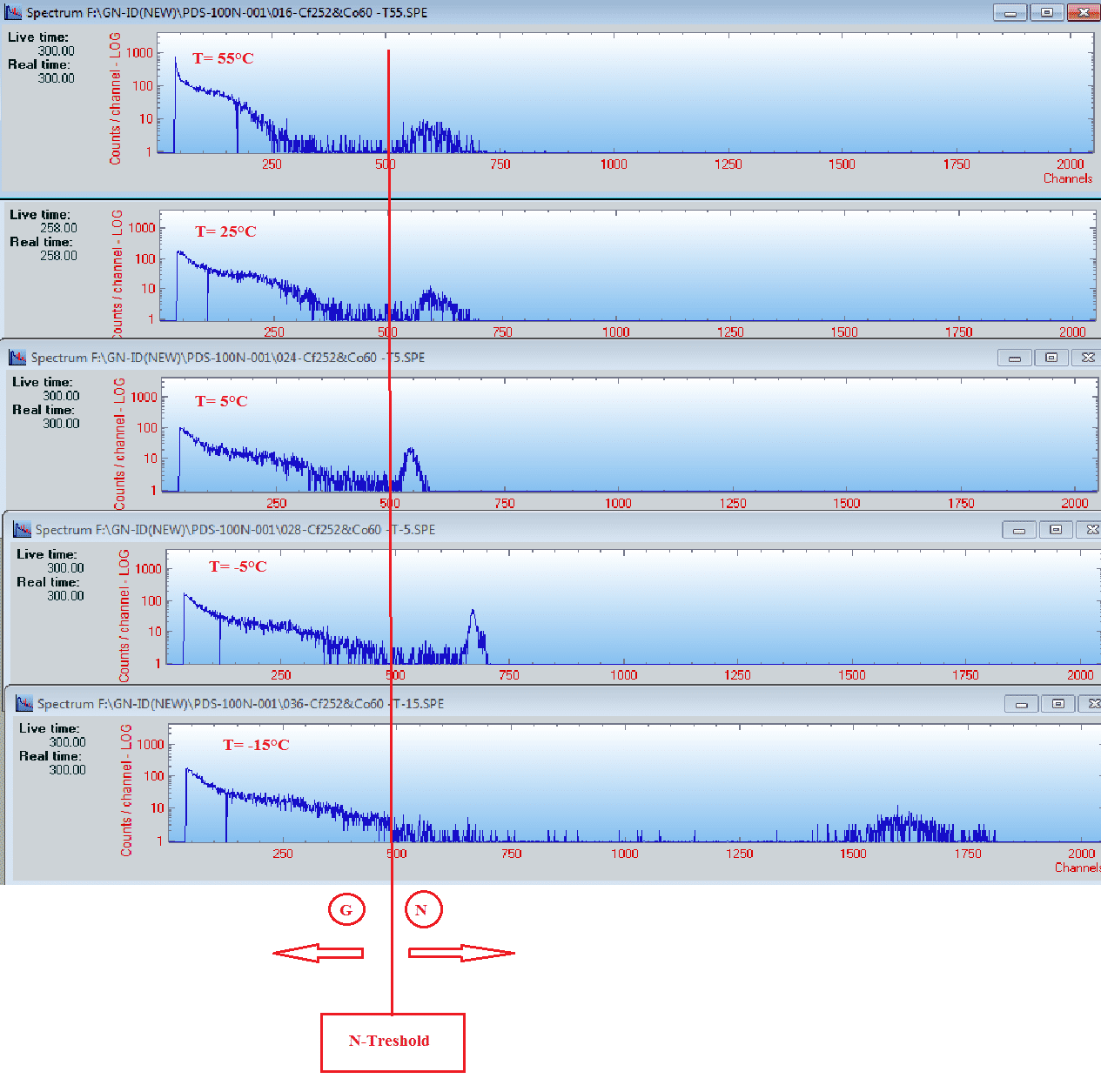
Temperature Dependence of Gamma-Neutron Discrimination Using Silicon Photomultiplier and LiI(Eu) Scintillation Crystal
2Electronics & Control Laboratories, Nuclear Research Center-Negev
Recently, the neutron detection has been thwarted by the He3 worldwide shortage [1]. The uniqueness of the He3 counters is both, in its efficiency and gamma-ray rejection. The gamma-ray rejection is of special concern when a handheld radiation detector with isotope identification capability is being considered. Such detectors require small sized solution for neutron detection in order to preserve their pocket size. Yet, the neutron sensor has to be sensitive enough to withstand the Homeland Security standard requirements [2], and nevertheless properly discriminate between gamma and neutron radiation. This discrimination is performed either based on a pulse height (PHD), which is equivalent to setting an appropriate threshold on an energy scale, or based on the difference of the pulse shape between the gamma and the neutron interaction. The discrimination threshold is a major parameter of the neutron false alarm rate that is induced by the gamma radiation that penetrates into the neutron energy region.
The 6Li(n,α) reaction is one of the three well established methods to detect thermal neutrons (the other two are 10B(n,α) and 3He(n,p)) [3]:
6Li + n à 3H1 + 4He2 + 4.78 MeV
The use of LiI scintillation crystal with Eu doping enables useful neutron detection when the 6Li compound is enriched to high percentage (>90%). Provided the LiI is photo-coupled to a photomultiplier tube (PMT), a good gamma-neutron energy separation can be achieved [4].
This essay presents a new approach based on the rapidly developing technology of Silicon Photo multiplier (SiPM) that was evaluated as a substitution to the PMT. Neutron detection method that combines the SiPM, as the light sensor, and LiI(Eu) scintillation crystal, as neutron sensing component, were implemented and results are reported.
Special concern when using the SiPM/LiI(Eu) complex is the temperature dependence of the discrimination between the gamma and the neutron as shown on Figure 1. In this work, we analyze this temperature dependence and we assess the neutron sensitivity as function of the selected discrimination level.
This new approach was implemented in the improved PDS-100 series - the personal radiation detector produced by Rotem Industries.

Figure 1. Simultaneous measurement of 60Co (gamma, 1.25MeV) and 252Cf (neutron) using the SiPM/LiI(Eu) complex over the ambient temperature range (-15oC – 55oC). The red line represents the discriminator level.
References:
- Kouzes RT. “The 3He Supply Problem.” Pacific Northwest National Laboratory White Paper PNNL-18388.
- ANSI N42.32/33
- F. Knoll, Radiation Detection and Measurement - 3rd edition (Chapters 14 and 15), John Wiley & Sons, 1999.
- Sanjoy Mukhopadhyay and Harold R. McHugh, "Portable gamma and thermal neutron detector using 6LiI(Eu) crystals", SPIE 5198, 73 2004
Powered by Eventact EMS